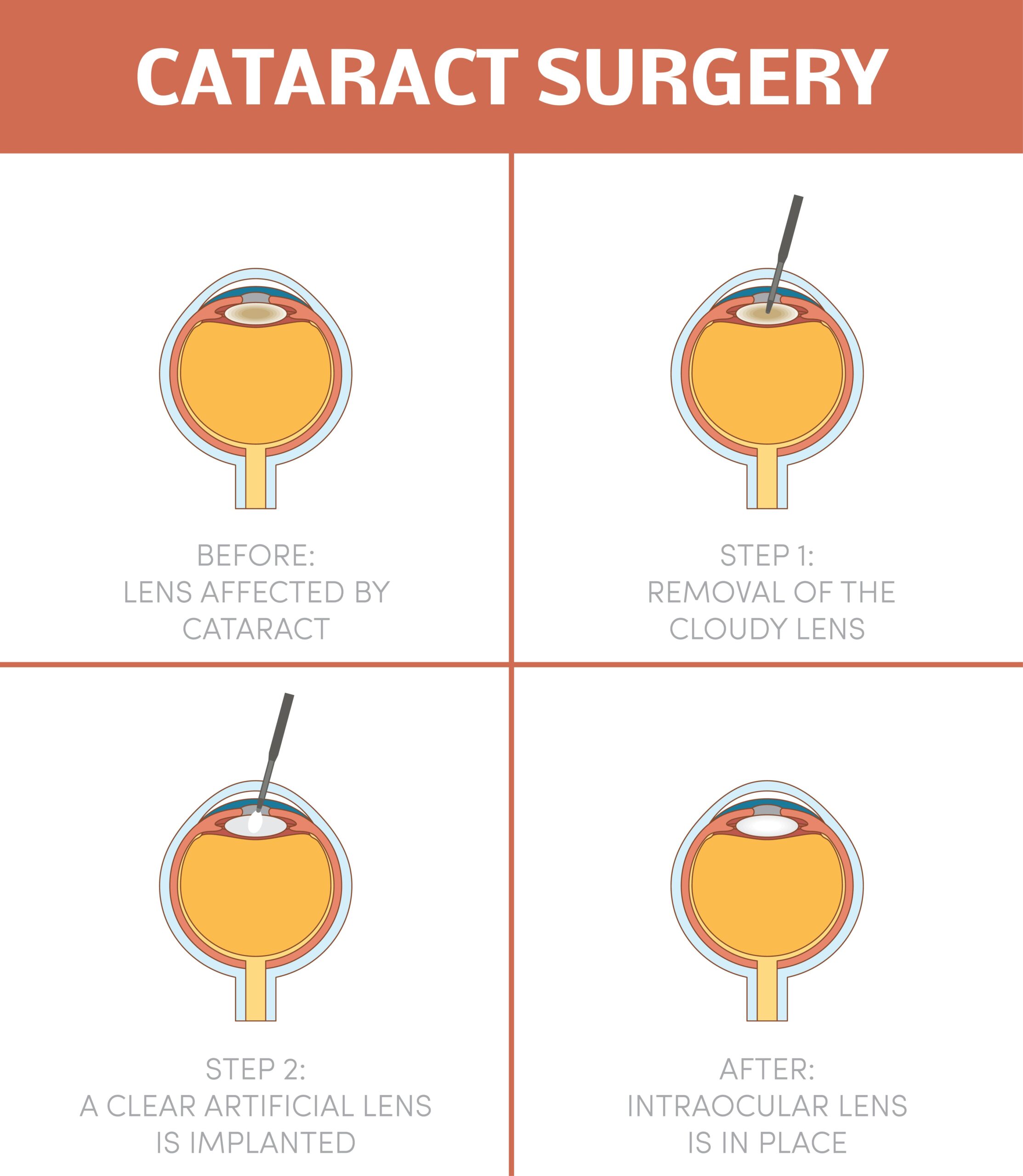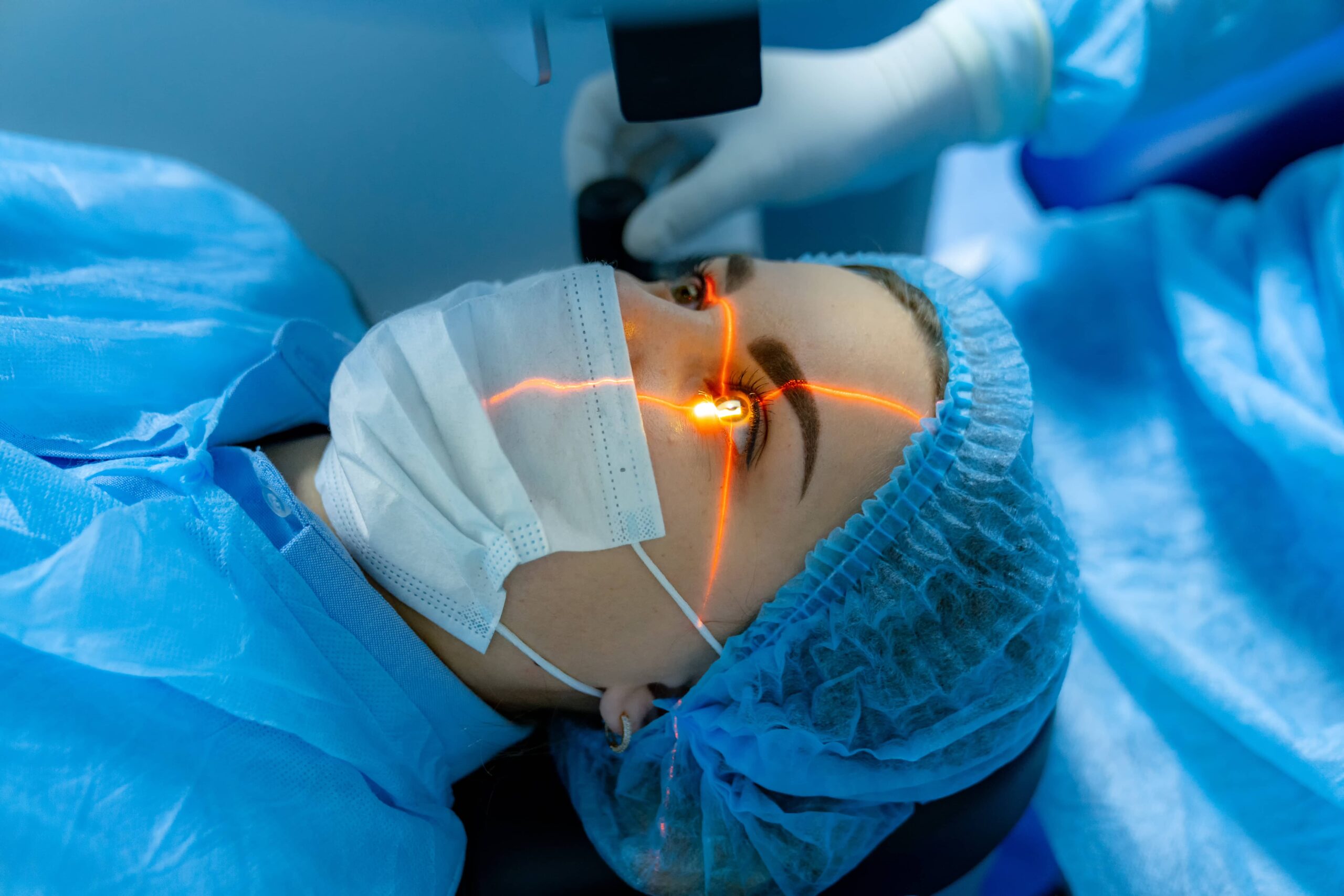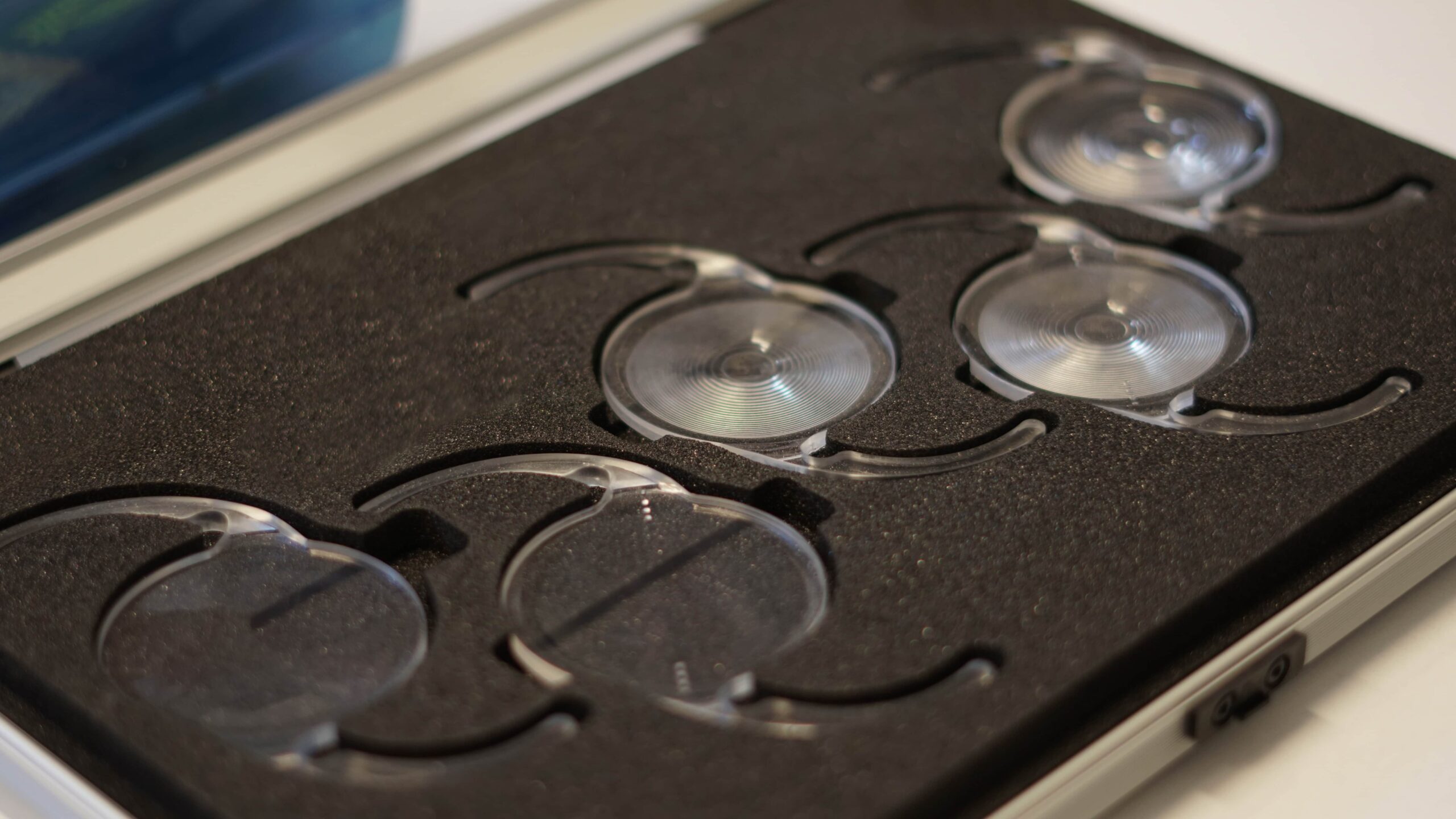Cataracts cause your eyesight to become blurry and distorted, making it impossible for you to see clearly. During cataract surgery, your eye’s natural lens will be surgically removed and replaced with a prosthetic intraocular lens.
Various manufacturers make cataract surgery lenses. There are generally 4 types of cataract lenses that can be implanted during surgery, although each manufacturer uses a different type of material and has its own distinctive characteristics.
The 4 types of cataract lenses are monofocal, toric, multifocal, and light adjustable. Below, we’ll go into further detail about cataract surgery and each lens type.
Table of Contents
- Treating Cataracts With Surgery
- LenSx Laser Cataract Surgery
- Intraocular Lenses (IOLs)
- Monofocal IOLs
- Toric IOLs
- Multifocal IOLs
- Light Adjustable Lens
- Choose the Right Cataract Lenses
Treating Cataracts With Surgery
Cloudiness, blurriness, and diminished color vision are just some of the symptoms of cataracts, which form when proteins in the lens of the eye clump together. In cataract surgery, the eye’s damaged lens is removed and swapped out for an artificial lens.
Cataract surgery is usually an outpatient procedure, meaning you won’t have to stay overnight in the hospital. The surgery itself only takes about 10-15 minutes, and most people report very little pain or discomfort afterward.
Cataract surgery is one of the most common surgeries performed in the United States and is considered to be very safe.

LenSx Laser Cataract Surgery

Many people would rather have surgery that uses lasers. Compared to conventional surgical methods, LenSx laser cataract surgery is much more accurate, painless, and speeds up healing.
Traditional cataract surgery uses standard surgical tools and blades to make incisions and manually remove the old lens, which makes it less precise than non-laser cataract surgery.
LenSx accurately maps the eye using high-resolution photos to provide accurate measurements and other information required for the procedure. A computer-guided laser creates a small incision in the eye, and the surgeon inserts a small probe. That probe uses ultrasonic energy to remove the damaged lens.
Intraocular Lenses (IOLs)

A natural lens in your eye adapts to incoming light and assists in focusing it on your retina. You can see because the lens contains a variety of light-sensitive cells that communicate with your brain.
This lens is susceptible to developing cataracts, which can only be treated surgically by removing your natural lens. After removing the natural lens, an intraocular lens (IOL) made of synthetic materials is implanted to take its place.
Monofocal IOLs
In cataract surgery, monofocal lenses are the most typical lens type implanted. It only has one focusing distance, hence the name monofocal. Depending on what you need, it can be set to focus on things close up, in the middle, or far away.
You could set it for clear-distance vision, as most people do, which is ideal for walking, running, driving, and seeing people far away. Most of the time, glasses are needed to read or do close work.
Toric IOLs
Premium lenses called toric IOLs are used to treat astigmatism together with short- or long-sightedness. Astigmatism occurs when the eye’s ability to focus varies in different directions, such as when it is stronger horizontally and weaker vertically.
As with an astigmatic eye, toric IOLs are able to rectify the condition because they, too, have varying strengths in different directions, which balance each other out. For toric IOLs to fully correct astigmatism, they must be aligned in the proper direction.
Multifocal IOLs
One type of premium IOL, known as a “multifocal IOL,” allows for clear vision at both far and close ranges. The IOL is divided into zones with varying focusing strengths. It might make it possible for you to read or operate a computer without glasses while also enabling you to see effectively in the distance.
Light Adjustable Lens
The first and only intraocular lens (IOL) that can be altered following cataract surgery is the Light Adjustable Lens. A unique feature of the Light Adjustable Lens is the ability to alter and preview your vision until it satisfies your own preferences and lifestyle needs. The lens is made of a special photosensitive material that can be adjusted.
Choose the Right Cataract Lenses
While there are a variety of lenses to choose from, not every type of IOL is right for everyone. The best way to determine which IOL is best for you is to consult with an eye specialist. They will conduct an evaluation and help you make the decision that’s best for your individual situation.
Don’t put off getting your cataracts checked! Early detection and treatment is the key to protecting your vision. Eye Care Professionals in Reno, Nevada, is your premier provider.











